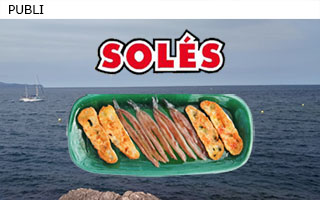Diving in Costa Brava
The Costa Brava is famous for its under-water activities that make it one of the major tourist destinations of the Western Mediterranean. Why do thousands of people come to Costa Brava to dive in our waters? The answer is that our coast offers unparalleled submarine landscapes and fauna surprises. It was not until the invention of the independent diving apparatus by Jacques-Ives Cousteau about 40 years ago that anyone, except scientists could see these wonders. Now, it is relatively easy to learn how to enjoy the diving experience.
One of the “submarine strolls” that I like most is to dive on a meadow of marine grass caressing the ends of its leaves with my fingers. These marine meadows are known by the fishermen of the Costa Brava as “alguers,” nevertheless they are not seaweed but authentic plants with underground roots, stems and flowers with fruits that have adapted to live in salt water.
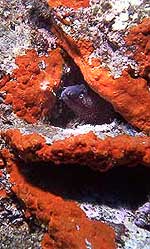 The most extended marine grass on our coast is the “posidonia” (oceanica Posidonia) and has a fundamental ecological role because it acts as protection for schools of very young fish and offers shelter to organisms that only are on the mature leaves of the “posidonia”. The marine grass is a very effective filter of carbon dioxide that accumulates with the passage of the time.
The most extended marine grass on our coast is the “posidonia” (oceanica Posidonia) and has a fundamental ecological role because it acts as protection for schools of very young fish and offers shelter to organisms that only are on the mature leaves of the “posidonia”. The marine grass is a very effective filter of carbon dioxide that accumulates with the passage of the time.
The independent government of Catalonia, in collaboration with local universities, has started a campaign of supervision of the marine meadows in the Costa Brava to evaluate their loss and to seek measures to stop the destruction of marine grasses.
When many people think of diving they visualize coral reefs. The Costa Brava coral reefs are waiting to amaze you.
What is the coral reef? Think of the palette of an oil painter? Imagine . . . hot colours like red, orange, canary, pink, next to dwelled tonalities, blue, violet yellow and an endless gradation of colours. Each colour is one small surface. It is the skin of sponge, corals, seaweed, colonial or solitary polyps that occupy every the last square centimetre of rock in dark corners where the seaweed does not get to proliferate.
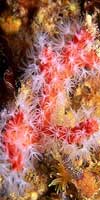 I like to enjoy the textures of the coral reef and its baroque chromatic that I discover with my diving lantern. The coral community is essentially a biological community, more zoological than botanic in nature. A showcase of surprises for the lover of details who takes the time to look, to contemplate, and to amuse oneself with the small details that makes up the coral reef.
I like to enjoy the textures of the coral reef and its baroque chromatic that I discover with my diving lantern. The coral community is essentially a biological community, more zoological than botanic in nature. A showcase of surprises for the lover of details who takes the time to look, to contemplate, and to amuse oneself with the small details that makes up the coral reef.
My grandfathers told me that he had to make a basin in the wharf in front of his house to keep his catch of lobsters alive because he frequently caught many more than the family could consume. These were the times when lobsters proliferated and were visible right under the surface of the sea. Alas, the population of most fish in the sea is dwindling. I am sad that I have not had the privilege to live during times of such fish abundance, but paradoxically I have been able to watch, face-to-face, lobsters in their own environment, something that my grandfather could never do.
These crustaceous are unconditional of the coral reef, enchant the roughness of the rocks, and are quite timid. Often we discover them in their hiding places by first seeing only their unmistakeable antennas poking from their hiding place towards the outer world. Fortunately, seeing a lobster is a common occurrence on the Costa Brava and brings great satisfaction to the divers. The rock lobster is a smaller version. Their remarkable territoriality makes it possible to visit the same lobster in the same hiding place on a number of successive immersions.
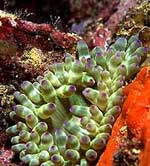 The calc stone cliffs of the Costa Brava look like a Gruyere cheese, where the stone meets the sea. The rainwater has eroded the underside of the rock creating passages that, in many cases are connected with the sea. Diving in submerged caves is trickier and requires special preparation and equipment to keep the diver safe.
The calc stone cliffs of the Costa Brava look like a Gruyere cheese, where the stone meets the sea. The rainwater has eroded the underside of the rock creating passages that, in many cases are connected with the sea. Diving in submerged caves is trickier and requires special preparation and equipment to keep the diver safe.
There are semi-enclosed surroundings of spectacular beauty are for the more-experienced diver where it is possible to contemplate backlighting watching towards the clarity of the entrance, or air chambers with stalactites of fantastic forms can be explored.
In the heart of the Costa Brava, the Medas Islands, great schools of fish can be seen like curved planes or waves or screens. The school’s behaviour is different here than in other places because they enjoy total protection from fishing. Divers can get close enough to even offer some food.
It is almost impossible to dive in Medas without seeing a large school of small fish, and in addition frequently a cluster of white breams will surround us, as if we were submerged in an Aquarium of former generations. The Medas Islands are one mile of distance from L’Estartit and constitute a natural reserve; daily boat excursions are available to visit them in sub-aqueous excursions or to see the bottom looking through the window keel of the glass-bottomed boats.
Another interesting reserve is the park of Cap de Creus where the waters usually are more transparent because of the swift currents and also thanks to the fact that important rivers do not drain nearby. The marine bottom at the Cap de Creus can be visited from Roses, Cadaqués, Port de la Selva or Llançà.
The third marine reserve that I want to mention is the Ses Negres in Begur.
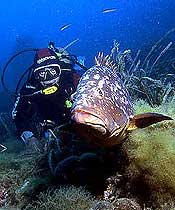 The protected zones offer many fascinating kilometres of coast that are worth your time to discover. For example, I also recommend the massif of Montgri, between L’Estartit and L’Escala, which can be reached from any diving centre located in these two towns.
The protected zones offer many fascinating kilometres of coast that are worth your time to discover. For example, I also recommend the massif of Montgri, between L’Estartit and L’Escala, which can be reached from any diving centre located in these two towns.
The safest way to discover diving for the first time is to let yourself be led by the hand of a professional diver . . . what we call a ” baptism of diving.” Normally, it costs about 40 € and the experience consists of diving accompanied of a monitor to a moderate depth for about 25 minutes. The baptisms can be made from the beach or the coast or from a boat according to the logistics of the diving centre. But they must not be made in the marine reserves. The access to the marine reserves is restricted to only titled divers who can recognize the fragile nature of the organisms at the bottom of the sea. The organisms are fragile and could be involuntarily damaged by inexperienced divers.
If your first experience is as exciting as I think it will be, you can take the steps toward obtaining a diving degree. This implies working with a qualified instructor at a diving centre where a theoretical and practical course will be followed at the end with a license to dive.
The most well established system of education on the Costa Brava is the P.A.D.I. (Professional Association of Diving Instructors), this international school of divers is most popular anywhere in the world and their licenses are recognized in all the seas. The price of the basic diving course is about 350 € and its duration is 4 days, at the minimum.
Diving is an addictive activity, the more it is practicised the more it is enjoyed. More and more it is also becoming a family activity where children, as young as 12 years of age can be titled and share the hobby with their parents.
A local diving centre is the information point where you will be able to satisfy your curiosity about the diving. A new way to know the Costa Brava!
Happy diving!
* The photos of this article have been provided by Pepe Navarro.
[cetsEmbedGmap src=http://maps.google.es/maps?f=q&hl=es&geocode=&q=Illes+Medes,+Torroella+de+Montgr%C3%AD&sll=40.396764,-3.713379&sspn=7.930074,14.128418&ie=UTF8&hq=&hnear=Islas+Medas&t=p&source=embed&ll=42.050695,3.219595&spn=0.037858,0.066175&z=14]
